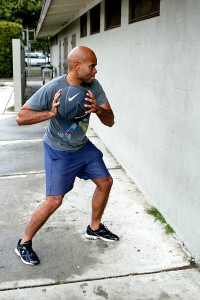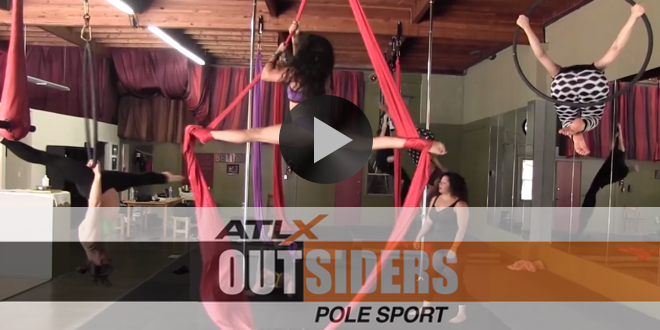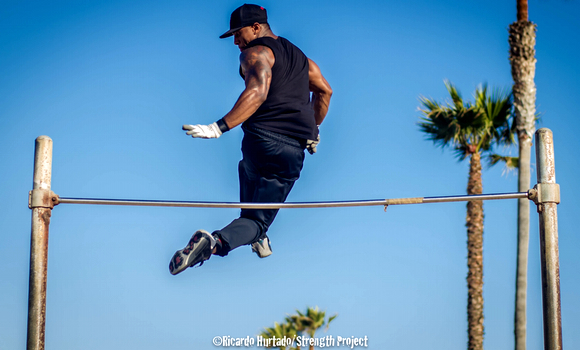By: Jason Lewis
 When it comes to peak athletic performance for competitive athletes and weekend warriors or building a great looking body, most people think about hitting the weights, hard and heavy. While weight training is a necessity to achieve those goals, that form of training by itself can leave you lacking in certain areas, and as the body adapts to that type of training, the gains will diminish.
When it comes to peak athletic performance for competitive athletes and weekend warriors or building a great looking body, most people think about hitting the weights, hard and heavy. While weight training is a necessity to achieve those goals, that form of training by itself can leave you lacking in certain areas, and as the body adapts to that type of training, the gains will diminish.
Athletes, meet your match: The Medicine Ball.
This underrated tool of the trade builds explosive upper and lower body power, greatly improving an athlete’s speed. Workouts with the med ball burn a ton of calories and it can be easily transported anywhere.
ATLX expert Robb Rogers, a Master Coach with the Collegiate Strength & Conditioning Coaches Association and a trainer to the military elite, is a big time believer in the benefits of the med ball. He uses it to develop power in the athletes that he trains.
“The medicine ball can be released. You can actually throw it,” Rogers said. “The best way to develop power is to actually release something. That’s going to be your highest power output. Whether it’s a baseball, football, or a medicine ball. As soon as you put force into an object and release it, that’s your highest power output.”
Rogers trains his athletes for strength with big time slow, heavy lifts. But for explosiveness, he believes that the change of pace provided by the med ball is exactly what well-rounded athletes require.
 “You’re going to become a creature of your repetitions,” Rogers said. “You’re going to reflect what you do. If you train heavy and slow all of the time, then you are going to become really strong, but slow, which in any sport is not very good. Anybody that has to run, jump, sprint, or swing, anything with power, they are going to need to do some medicine ball work to help with their speed.”
“You’re going to become a creature of your repetitions,” Rogers said. “You’re going to reflect what you do. If you train heavy and slow all of the time, then you are going to become really strong, but slow, which in any sport is not very good. Anybody that has to run, jump, sprint, or swing, anything with power, they are going to need to do some medicine ball work to help with their speed.”
Athletes need to train all types of muscle fibers to maximize their athletic potential, but far too many athletes only hit the slow twitch muscles.
“You have fast twitch muscle fibers, slow twitch muscle fibers, and intermediate muscle fibers,” Rogers said. “If I’m always training the slow twitch muscle fiber, then I’m only training one part of my body, and the intermediate is going to mimic the slow twitch. So I want to train across the full spectrum of the speed continuum from heavy and slow to light and fast. But I also want to train the actual muscle fibers that are explosive and fast as well as the ones that are slow. If I train slow all of the time, then again, the intermediate muscle fibers are going to look like, and act like the slow muscle fibers.”
 Using a med ball allows the athlete to utilize a light weight with rapid, high repetitions, mimicking what an athlete has to do on the field of play. With the med ball, the athlete can employ and strengthen the motions that are used in sports.
Using a med ball allows the athlete to utilize a light weight with rapid, high repetitions, mimicking what an athlete has to do on the field of play. With the med ball, the athlete can employ and strengthen the motions that are used in sports.
“You don’t have to follow the structure of a machine, a dumbbell, a bar, or a kettle bell,” Rogers said. “You can throw it, you can chop it, you can lift it, you can twist it, and make several different movements. You can do a lot of those movements with a plate, or a small dumbbell, but you are not going to release it. That’s where the beauty of the medicine ball comes into play. If you’re at a gym that has a wall that you can throw it off of, or a high enough ceiling, you can actually release the ball, and that’s where you get the power output.”
For athletes or fitness enthusiasts who are simply looking to build a great looking body without going to the gym, the med ball is one of the best pieces of equipment available. When working out at home or at a local park, equipment is extremely limited, but the med ball can easily be used anywhere.
“With the medicine ball, and with something that you can step on, like a park bench, now I can do everything,” Rogers said. “I can push, I can pull, I can throw, I can chop, I can lift, I can twist, I can squat, I can step, I can sprint, and I can jump. There’s not a whole lot left for me to do.”
The great thing about the medicine ball for people who want to avoid gym memberships is the affordability. Typically ranging from between $20 to $40 in price, a small monetary sacrifice as opposed to a monthly gym membership.
For lower body workouts, the medicine ball can be held overhead for squats, lunges, and box jumps. It can be thrown into the air, exerting power from the legs. For upper body workouts, the medicine ball can be thrown against a wall in rapid fire from various angles. Switch it up with one-arm vs two-arm throws.
 ATLX The only sports entertainment television and digital media network fully devoted to everyday athletes, athletic lifestyle and athletic culture.
ATLX The only sports entertainment television and digital media network fully devoted to everyday athletes, athletic lifestyle and athletic culture.




